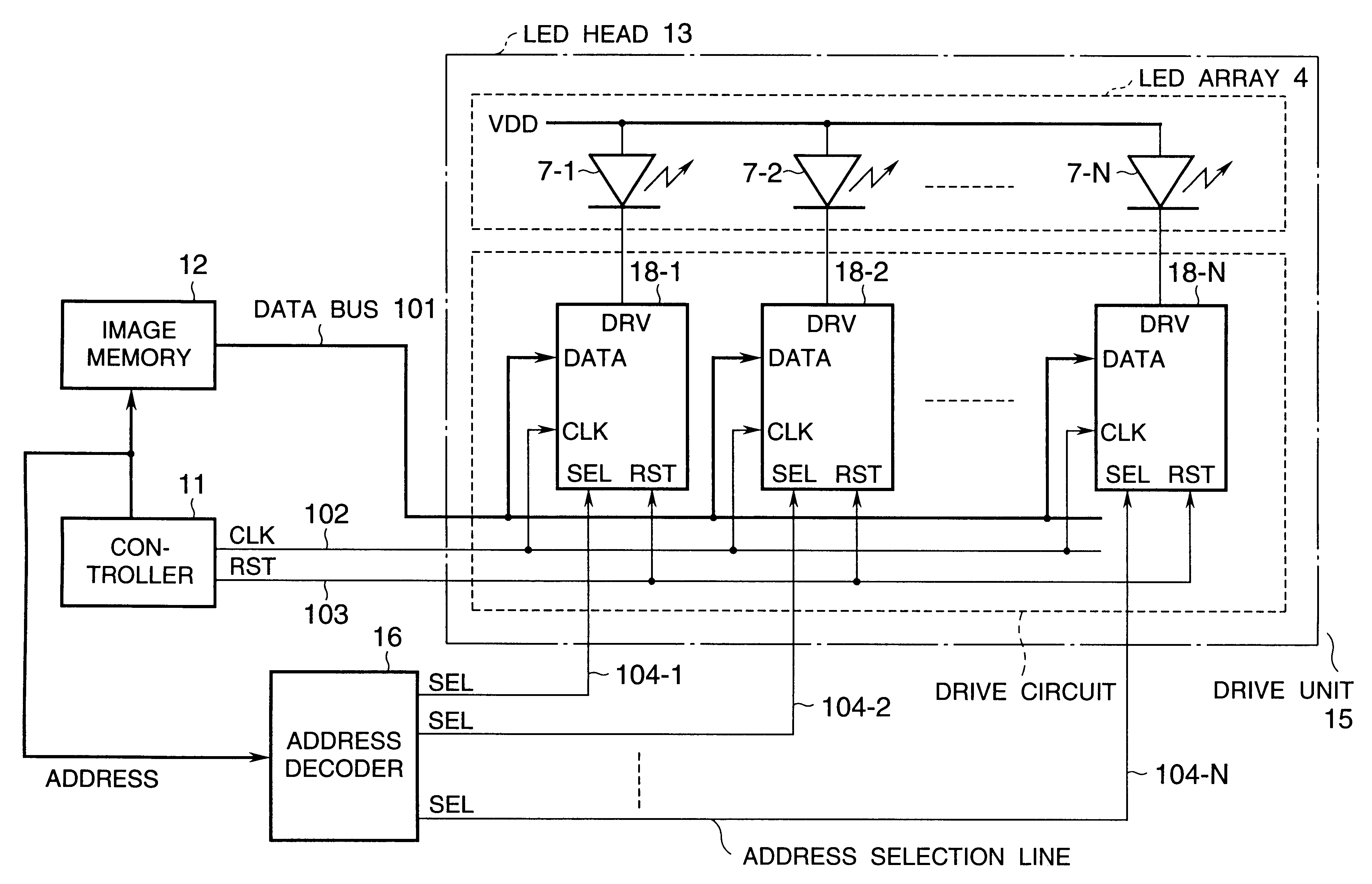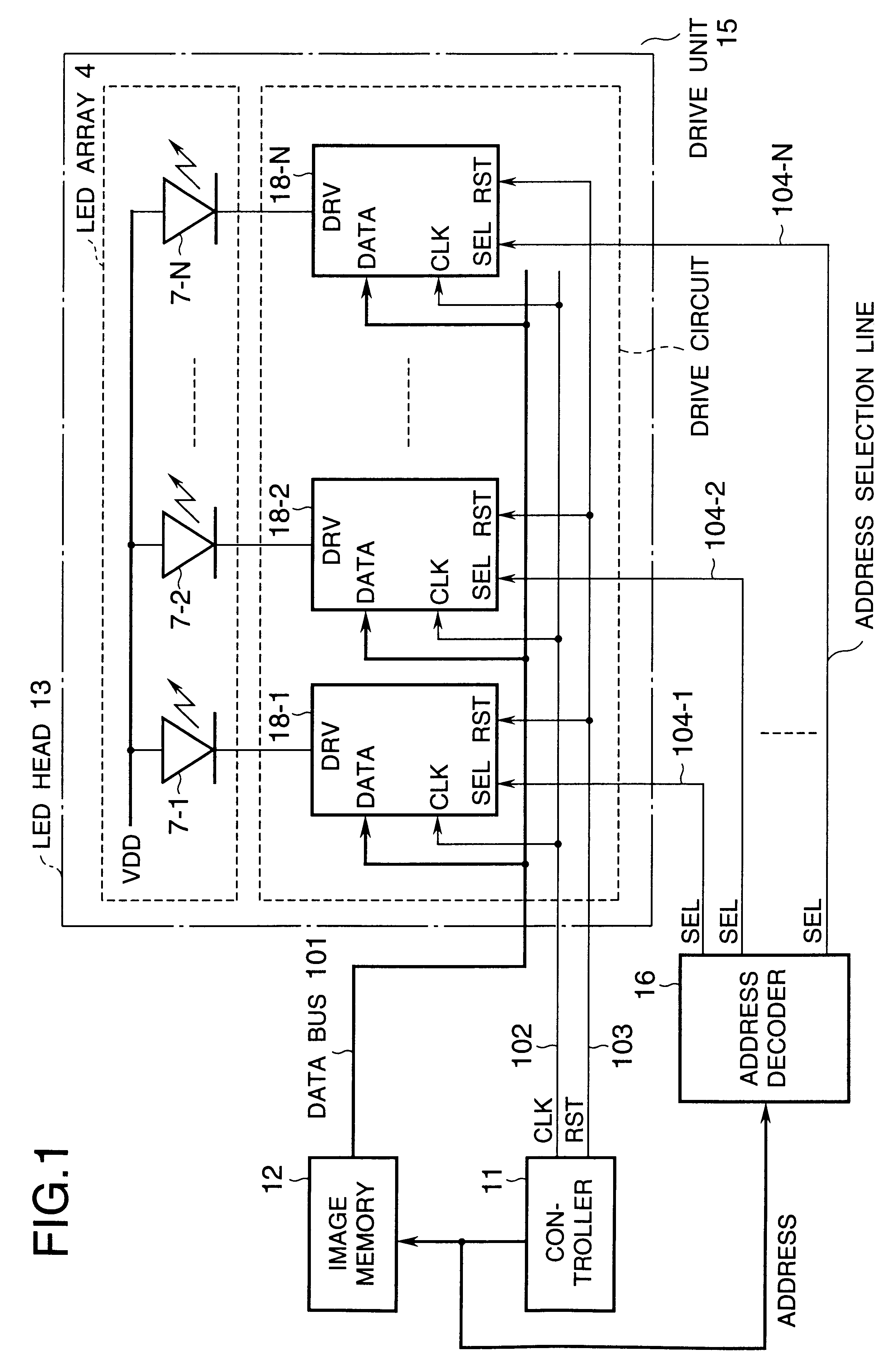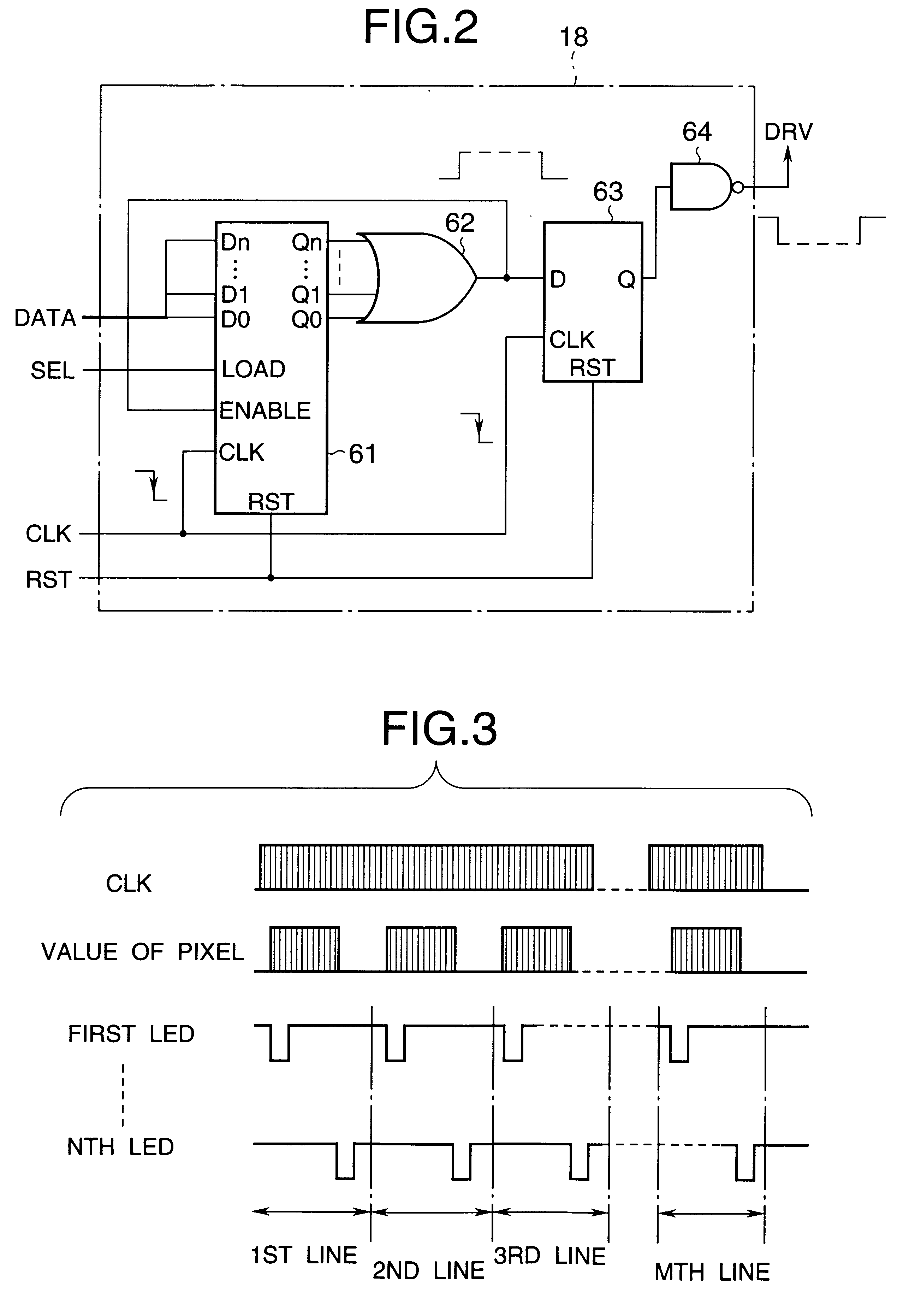Electrophotographic printer
- Summary
- Abstract
- Description
- Claims
- Application Information
AI Technical Summary
Benefits of technology
Problems solved by technology
Method used
Image
Examples
first embodiment
FIG. 1 shows a relevant portion of a first embodiment of an electrophotographic printer of the invention. The electrophotographic printer includes a controller 11, an image memory 12, an LED head 13, and an address decoder 16. The LED head 13 includes an LED array 4 having LEDs 7-1 to 7-N aligned in line, and a drive unit 15 having drive circuits 18-1 to 18-N. The drive circuits are connected to corresponding LEDs.
Each of the drive circuits 18 has input terminals DATA, CLK, SEL, and RST and an output terminal DRV. The input terminals DATA are connected to the image memory 12 via a data bus 101 that includes a plurality of data signal lines. The input terminals CLK are connected to the controller 11 via a common control signal line 102. The input terminals SEL are connected to the address decoder 16 via the address selection lines 104-1 to 104-N. The input terminals RST are connected to the controller 11. The output terminals DRV are connected to corresponding LEDs 7.
The image memory...
second embodiment
FIG. 5 shows a relevant portion of a second embodiment of an electrophotographic printer of the invention. The electrophotographic printer includes a controller 21, an image memory 12, and an LED head 23. The LED head 23 includes an LED array 4 having LEDs 7-1 to 7-N arranged in line, and a drive unit 25 that drives the LEDs 7-1 to 7-N. The drive unit 25 has drive circuits 28-1 to 28-N that are connected to corresponding LEDs 7. The drive circuits 28 hold addresses representing corresponding LEDs.
Each of the drive circuits 28-1 to 28-N has an output terminal DRV and input terminals DATA, ADR, and RST. The input terminals DATA are connected to the image memory 12 via the data bus 101 that includes a plurality of data signal lines. The input terminals CLK are connected to the controller 21 via the common control signal line 102. The input terminals RST are connected to the controller 21 via the control signal line 103. The input terminals ADR are connected to the controller 21 via add...
third embodiment
The third embodiment simplifies the complexity of the wiring between the controller 31 and drive circuits 38 and interconnection between the drive circuits in the drive unit 35, allowing miniaturizing of the circuit. The controller 31 is required only to output the LT on a line-by-line basis, so that the controller 31 controls the drive circuits in a simple way.
PUM
 Login to view more
Login to view more Abstract
Description
Claims
Application Information
 Login to view more
Login to view more - R&D Engineer
- R&D Manager
- IP Professional
- Industry Leading Data Capabilities
- Powerful AI technology
- Patent DNA Extraction
Browse by: Latest US Patents, China's latest patents, Technical Efficacy Thesaurus, Application Domain, Technology Topic.
© 2024 PatSnap. All rights reserved.Legal|Privacy policy|Modern Slavery Act Transparency Statement|Sitemap



